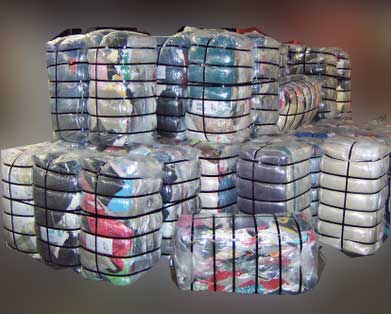FASHION LANDFILLS
Do you love clothes? I do….How about Fashion? Are you a Fashionista?
Don’t they look good hanging in our closets? How about now……………..
WHAT IS A LANDFILL SITE?
Landfill sites are carefully designed structures built on or on top of the ground in which rubbish is being dumped. The idea is to make sure that the rubbish is kept apart from the surrounding environment, which includes groundwater, air and rain. The rubbish is kept dry and not in contact with air. Under these conditions, rubbish will not decompose very much. A landfill is not like a compost heap, where the rubbish is buried in such a way that it will rot down (decompose) quickly. Bacteria in the landfill break down the waste even though there is no oxygen present (anaerobic). A by-product of this anaerobic breakdown is landfill gas, which contains approximately 50 percent methane and 50 percent carbon dioxide with small amounts of nitrogen and oxygen. This presents a hazard because the methane can explode and or burn. So, the landfill gas must be removed. To do this, a series of pipes are placed within the landfill to collect the gas. In some landfills, this gas is vented or burned.
HOW MUCH DO WE DUMP?
When new trends and styles hit the stores each season do you throw out your old stuff to make way for the new or do you take a more fashionable approach and reuse or recycle them?
Americans throw away an estimated 10 million tons every year while over 80% of waste generated in China is land filled. The Solid Waste Management Department of Karachi in India claims that over 7,000 tons of rubbish is generated daily. Waste management is now a global concern.
Research carried out by Global Cool the climate change charity, found that women who shop online are twice as unlikely to return unwanted clothes than those that are bought in store. The charity asked 3,500 UK women who revealed that they spent an average of £470 last year on items that they did not ever wear, which is a hefty figure considering that this equates to an estimated UK total of £11.1 billion.Even scarier perhaps though, is that one in ten of the women who took the survey admitted that they just bin the unwanted clothes which actually contributes to an estimated 900,000 tonnes of landfill waste. This waste also leads to needlessly creating 8 million tonnes equivalent of CO2 through the purchase of unworn clothes.by Clare Saxon
Our “throw away attitude” contributes to the large increase in waste now being created causing, what the US Protection Agency has identified as a greenhouse gas 20 times more potent than carbon dioxide, Methane Gas. Since the Industrial Revolution in the late 1700’s, the earth’s methane concentration has increased by 150%. As world population grows the consumption of resources increases and the output of waste is increased.
Fashion itself promotes consumption as each season the latest styles in clothing, shoes, handbags and the like, encourage us to throw out the old and consume the new. A report published in 2006 by the University of Cambridge Institute for Manufacturing stated that “in 2000 the world’s consumers spent around US $1 trillion worldwide buying clothes. A third of that in Western Europe, another third in North America and about a quarter in Asia”. “Fast fashion” made from cheaper materials which may only last one season, provide affordable items aimed mostly at young women and their insatiable desire to have the season’s latest styles.





iiiiiiiiiiiiiiiii loooooooooooooooooooooooooooooovvvvvvvvveeeeeee youuuuuuuuuuuuuuu
i love you
i love youuuuuuuuuuuuuuuuuuu
I am sharing this very important info on my Facebook wall!